Spider Plants (Chlorophytum comosum), also known as Airplane Plants or Ribbon Plants, are indoor plants that are notorious for being low-maintenance plants and disease-resistant.
However, even if there aren’t many conditions that can negatively affect your Spider Plants, you should look out for Leaf Blights, Root Rot, Leaf Tip Burn, Fungus Gnats infestations, and bleached foliage.
Fortunately, most issues affecting indoor Spider Plants have environmental origins, and by providing the ideal conditions, you can successfully prevent them.
- Related article: Spider Plant Maintenance
When the plant has been attacked by a parasite or another pest, usually the best course of action is to repot it in a new, clean, and sterile vase and treat the condition specifically.
1. Algal Leaf Spot: Remove Infected Leaves
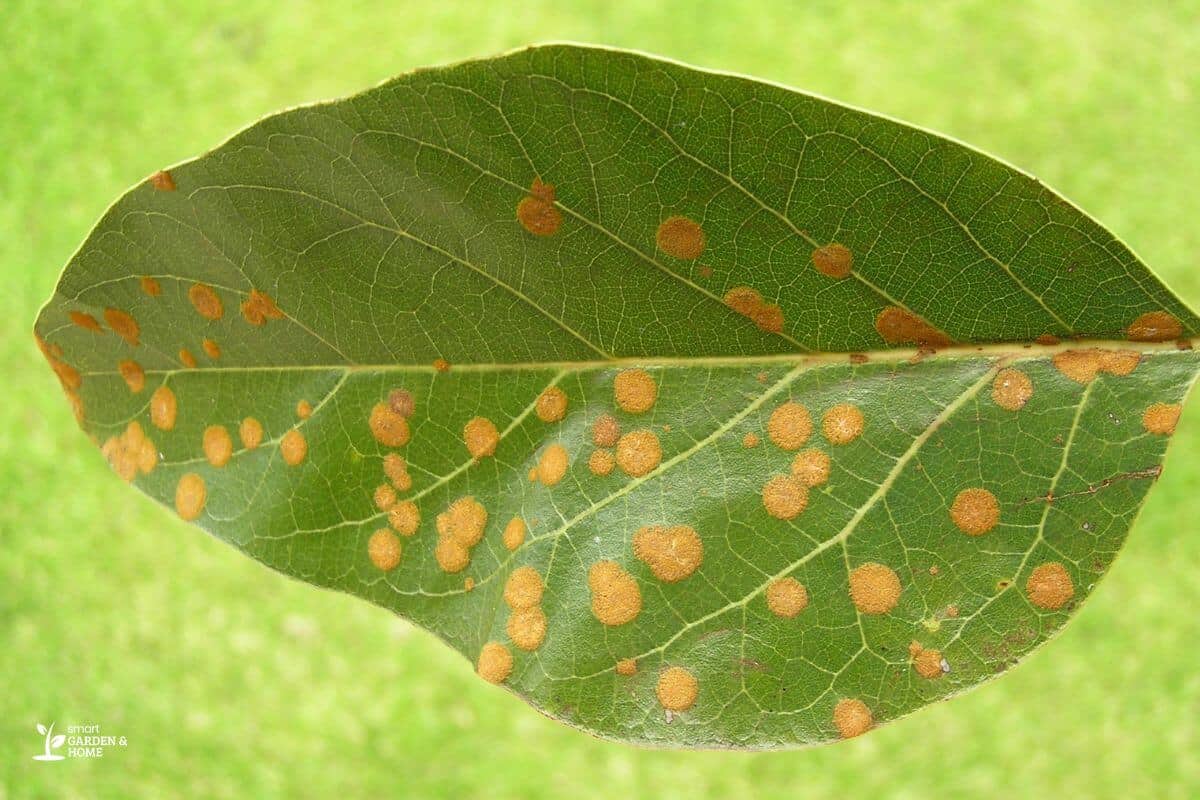
Algal Leaf Spot is caused by parasitic algae that attack Spider Plants kept in overly humid and warm areas.
The symptoms are tiny green-brown blotches that appear mostly on young, tender leaves. When they mature, they become darker in color and cover larger areas.
Fortunately, the Algal Leaf Spot is rarely problematic for Spider Plants and can be treated easily by removing the leaves with spots and avoiding water for a while.
The best prevention for this disease is to ensure that the soil is well-draining and not overwatered.
2. Fungal Leaf Blight: Treat with Fungicides
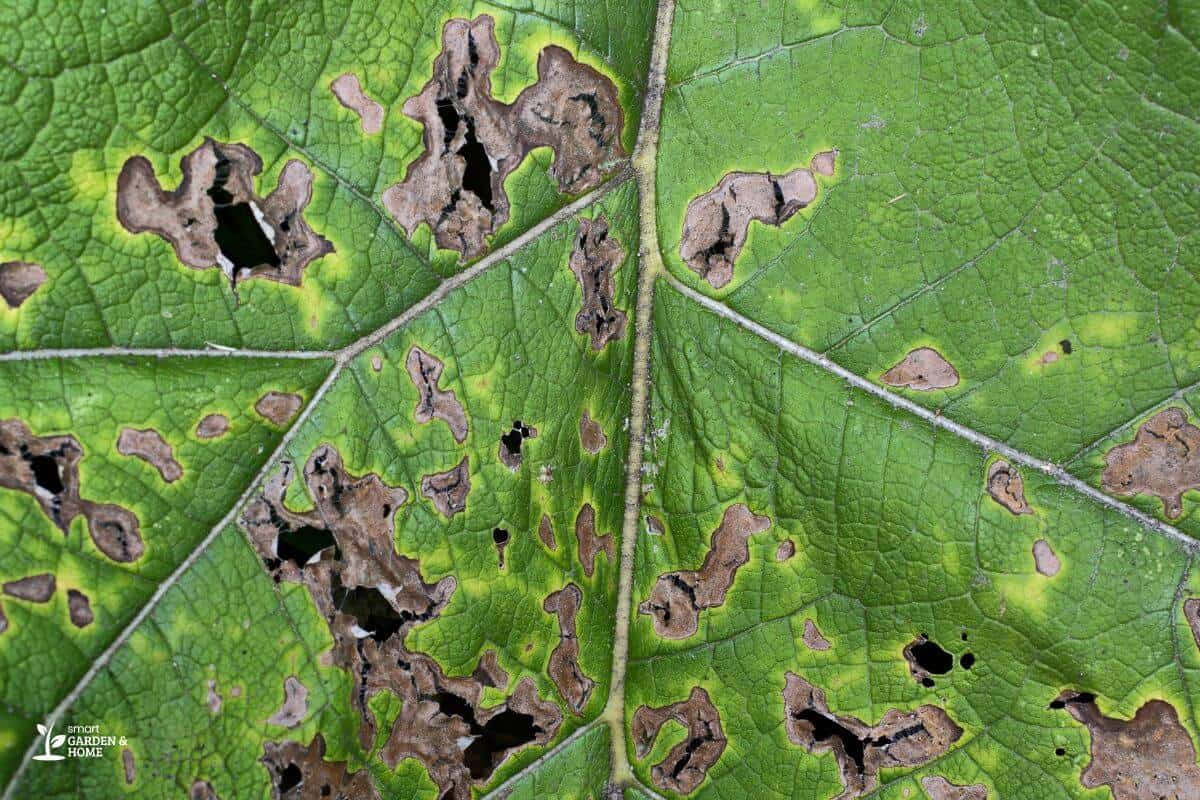
Other diseases that can affect Spider Plants in humid conditions are Fungal Leaf Blights.
Most Fungal Blights cause brown spots to appear on the leaves. The accompanying symptoms can help to tell them apart from each other and from other diseases.
Downy Mildew will cause drooping of the leaves and stunted growth, while foliage affected with Alternaria will wither and sometimes fall.
Septoria Leaf Spot affects the underside of the leaves, which can yellow and wither over time.
Finally, Powdery Mildew affects plants in moist and cool conditions and manifests itself as white spots that will later turn brown.
These fungal diseases can be treated by using products containing Neem oil, an organic insecticide that can cure many conditions.
For severe infections, you can use copper-based fungicides.
It’s also a good idea to repot your Spider Plant and keep it away from healthy ones to avoid the spreading of the fungus.
Consider moving it to an area with dry conditions and adjusting your watering schedule.
3. Bacterial Leaf Spot: Remove Infected Parts
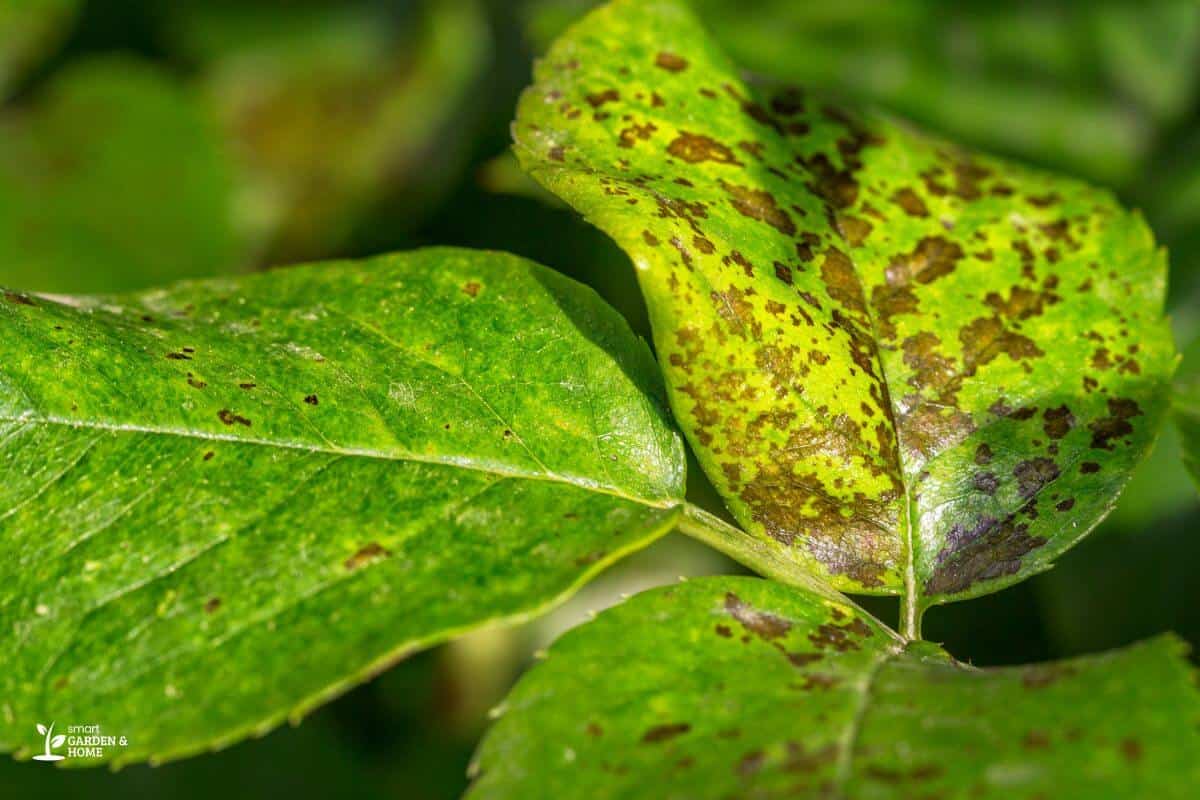
Bacterial diseases look like watery, sunken spots of a brown or black color.
The most common cause of Bacterial Leaf Spots is poor ventilation, but overwatering and high humidity can worsen your plant’s condition.
Bacterial Leaf Spots cannot be cured. It is possible to stop it from spreading by removing the infected parts and spraying the plant with a mix of water and baking soda.
If the entire plant hasn’t been completely affected by the disease, it can potentially be rescued by relocating it to a well-aerated room and bright, indirect lighting.
Another trick is to always water the soil directly without getting the leaves wet.
4. Root Rot: Repot
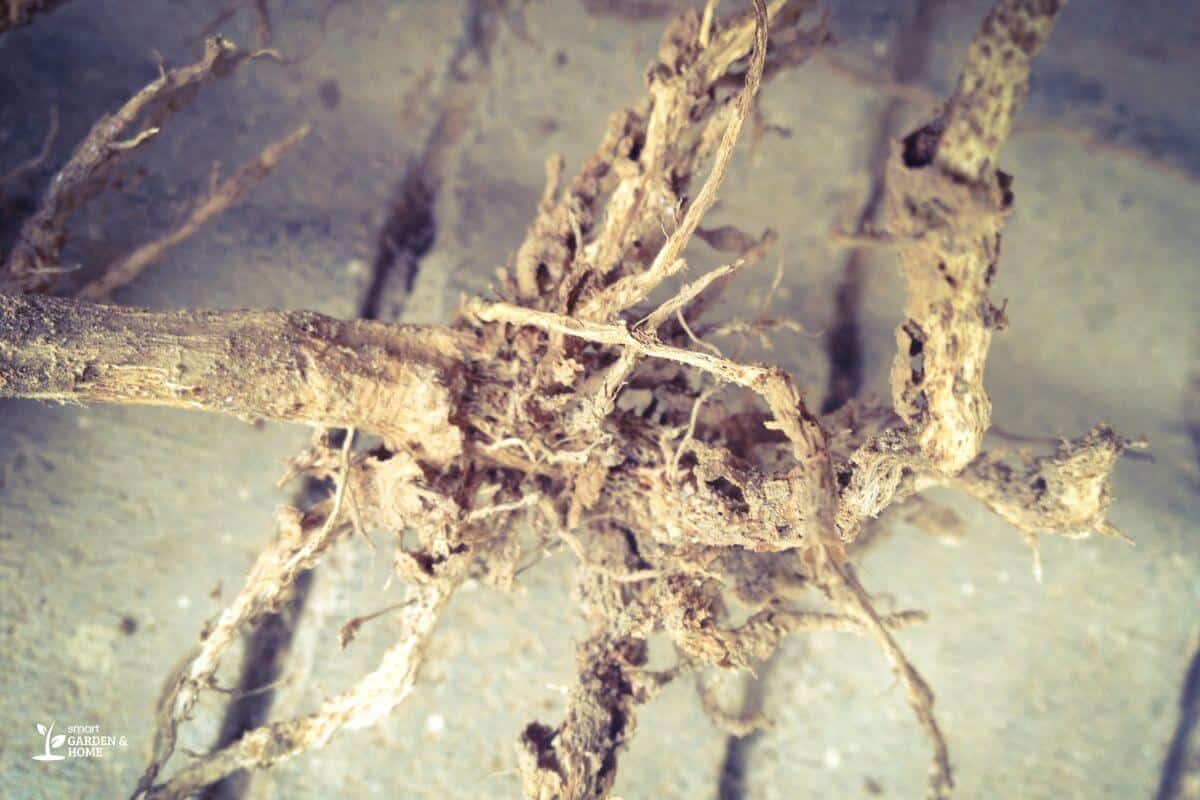
Unlike many other problems that are caused more by environmental conditions than diseases, Root Rot is an illness caused by the spread of microorganisms that live in the soil.
This condition though, will only develop if the plant is waterlogged. This can be caused by overwatering or poor drainage.
The symptoms of Root Rot range from yellowing and falling of the leaves to wilting and stunted growth, as the plant is no longer able to absorb the nutrients it needs.
A Spider Plant suffering from Root Rot can be saved if enough plant roots are still healthy.
First, take the plant out of its pot and rinse the plant roots gently with running water. Then, cut away all the damaged roots, which you will recognize because of their softness and unpleasant smell.
This is necessary to avoid the infection from spreading again.
When repotting the Spider Plant, ensure that the new pot has drainage holes at the bottom and select well-draining soil.
5. Leaf Tip Burn: Adjust Environmental Conditions
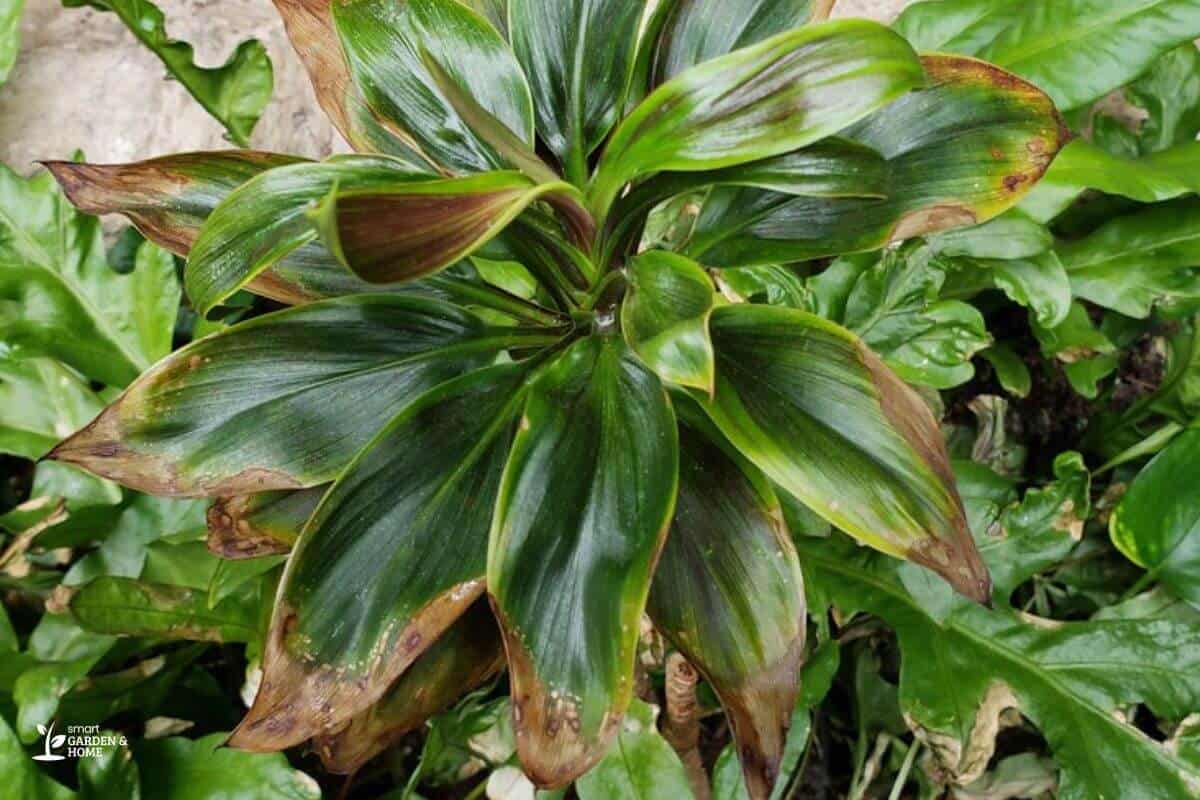
The most common condition that can affect Spider Plants is Leaf Tip Burn or Brown Leaf Tips.
Leaf Tip Burn is not actually a disease and can occur due to many different reasons.
Most often, the cause is environmental. For instance, exposure to direct sunlight and insufficient humidity can cause the green margins of the developing leaves to be dark brown and dry.
Other causes are overlooked water quality, causing excess fluoride or high levels of chlorine content in tap water, excessive fertilizer, and inconsistent watering.
Nutrient deficiencies may be caused by various factors, including soil with a high pH.
To address this issue, it is important to first determine the root cause of the presenting symptom.
By adjusting the plant’s environmental conditions or the watering and fertilization schedule, it’s possible to revitalize your plant.
When the browning extends to the stems, it might be no longer possible to save the Spider Plant, so it’s important to act quickly.
If you want, you can cut the browning tips and other parts of the leaves using sharp, sterilized scissors, but this is not strictly necessary.
6. Fungus Gnats
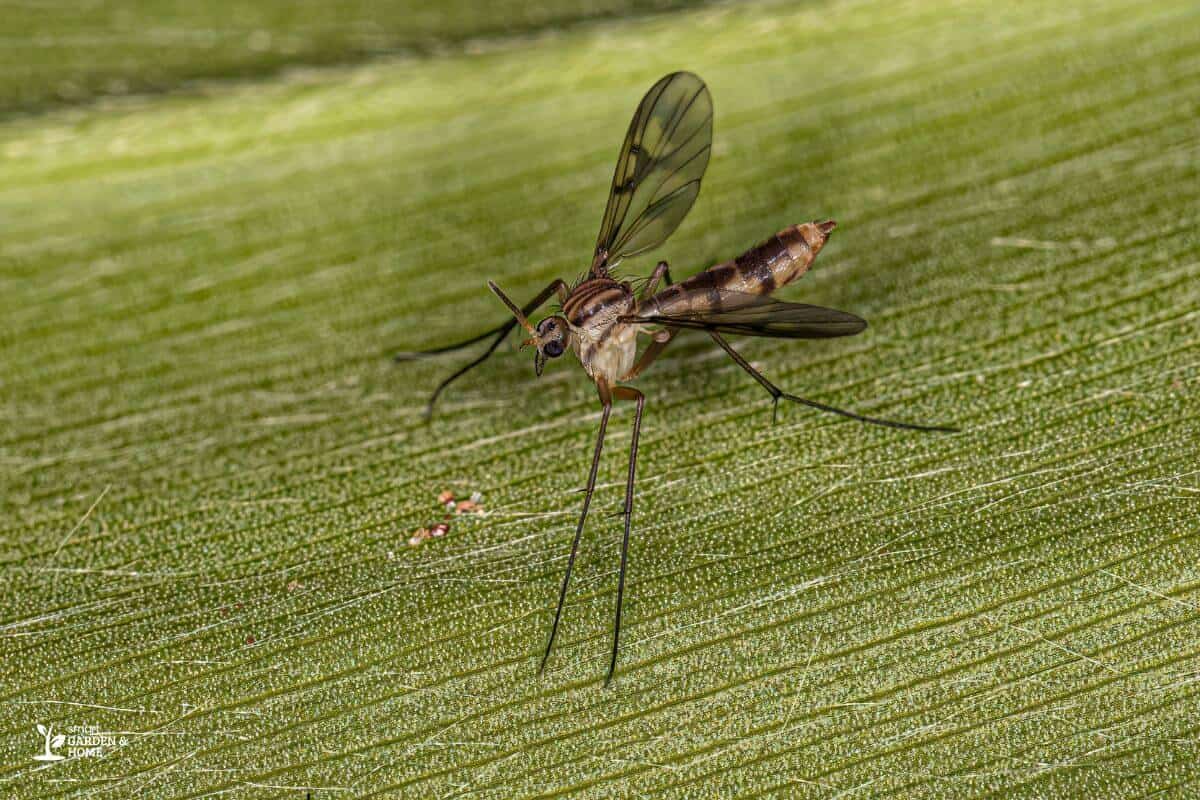
Fungus Gnats are common pests that are generically attracted to soil moisture and warm conditions.
If you have kept the soil of your Spider Plant too humid, you might have Fungus Gnats living in your soil mix.
These insects don’t normally cause serious problems unless the infestation is severe. In this case, the great number of larvae present in the soil can cause stunted growth.
Adult Fungus Gnats can be caught using sticky traps, thus preventing them from laying their eggs in the soil.
The traps can be made by cutting strips with sticky substances in squares and attaching them to small sticks. These should be placed in the soil around the base of your Spider Plant and changed every few days.
An important precaution is to move the infested plant away from healthy ones, even if they are not Spider Plants.
It might also be a good idea to repot your plant in a clean pot with drainage holes filled with fresh soil. In the future, take care not to water your Spider Plant excessively.
7. Bleached Foliage
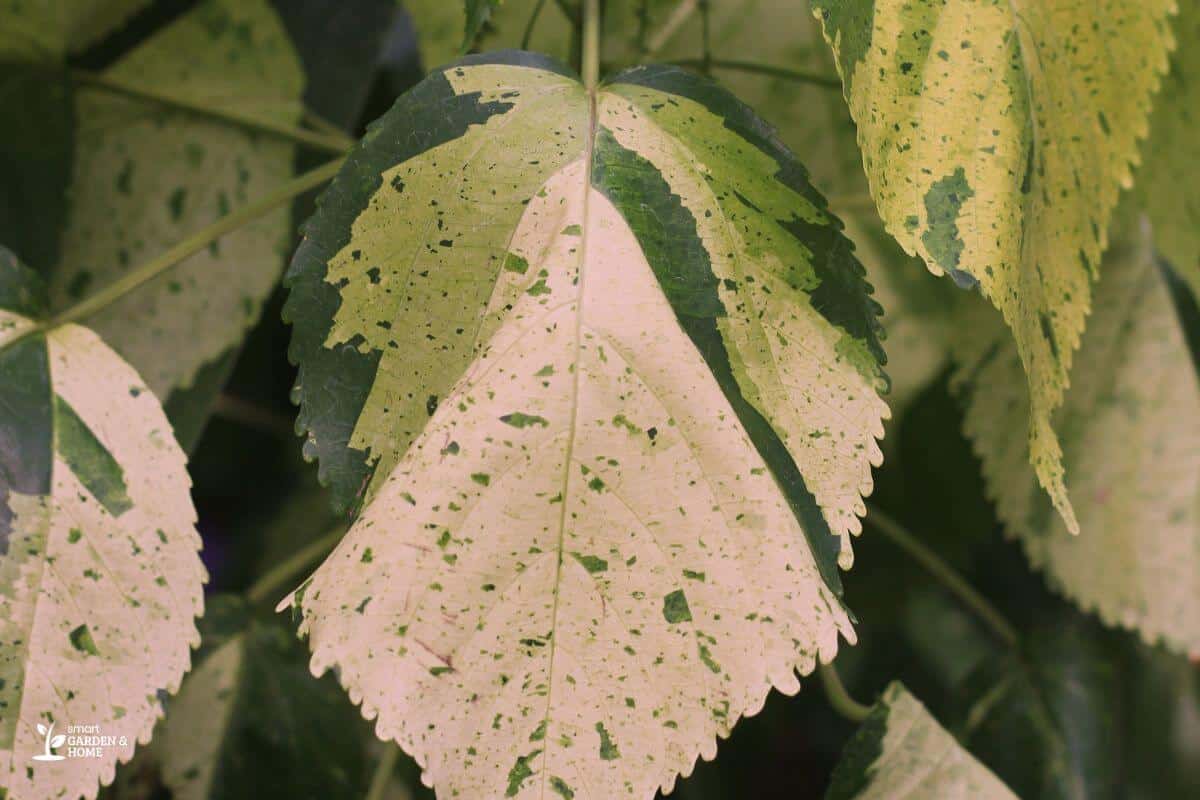
Spider Plant leaves can lose their natural color and acquire a yellow, white, or gray tint if they are exposed to extreme temperatures or light intensity.
Bleached foliage most often occurs in Spider Plants that are kept in greenhouses, especially if they are hung from the ceiling where the heat is strongest.
These plants are native to tropical forests where they grow under the cover of taller plants, shielded from the intensity of the sun. In the house, they need a lot of bright light, but always indirect.
To prevent bleached foliage, keep your Spider Plant at an average temperature between 55°F and 85°F. Place it in an area where it can get a few hours of bright, indirect sunlight daily.
Once you provide proper lighting and desirable temperature, your Spider Plant should be able to recover quickly.
Tips to Keep Spider Plant Diseases Away
- Don’t overwater or underwater your plant.
- Choose a garden soil that is well-draining.
- Place your plant near an east-facing window and ensure that it is exposed to bright, indirect light.
- Keep your plant at an area with the condition of temperature between 55°F and 85°F with average humidity.
- Fertilize regularly during the growing season using a low-strength product.
Final Thoughts on Spider Plant Diseases
It’s essential to be vigilant about Spider Plant diseases to ensure that you will always have thriving and healthy plants.
Remember to regularly check for signs of damage and promptly treat any common issues that arise.
Using natural remedies and implementing proper care techniques can go a long way in preventing diseases, such as pest infestations, Root Rot, and Leaf Spots.
By following these guidelines, you can enjoy the healthy growth and numerous benefits that a Spider Plant has to offer, from air purification to the aesthetic appeal of its attractive foliages.
Keep your Spider Plant happy and healthy, and it will continue to brighten up your home or office space for years to come!
Take a look at these cool articles to know more about Spider Plants:
- Spider Plant Root Rot Treatment
- What to Do if My Spider Plant Is Dying
- Spider Plant Not Thriving
- My Spider Plant Is Drooping
- Health Benefits of Spider Plants
Sources:

